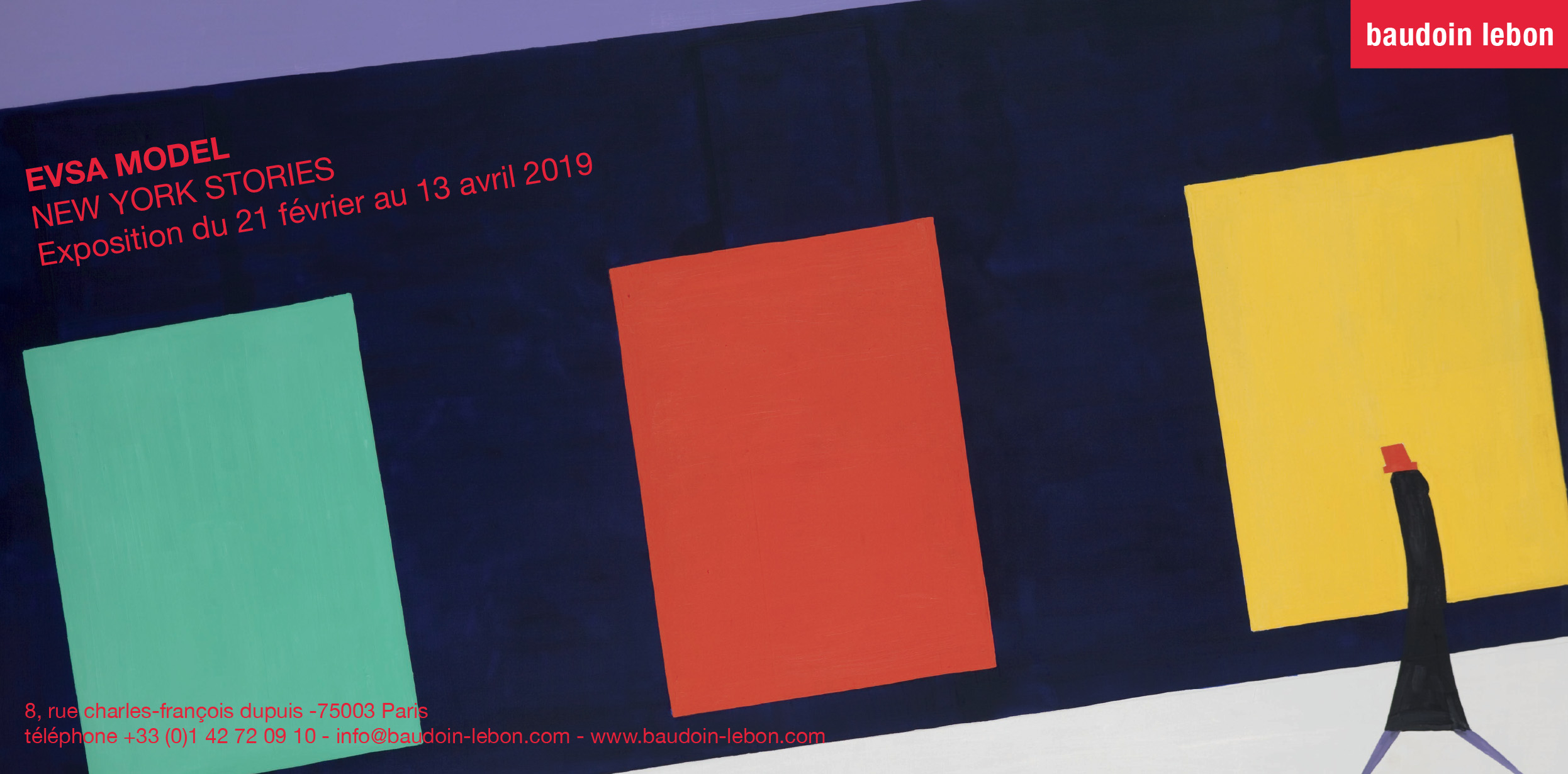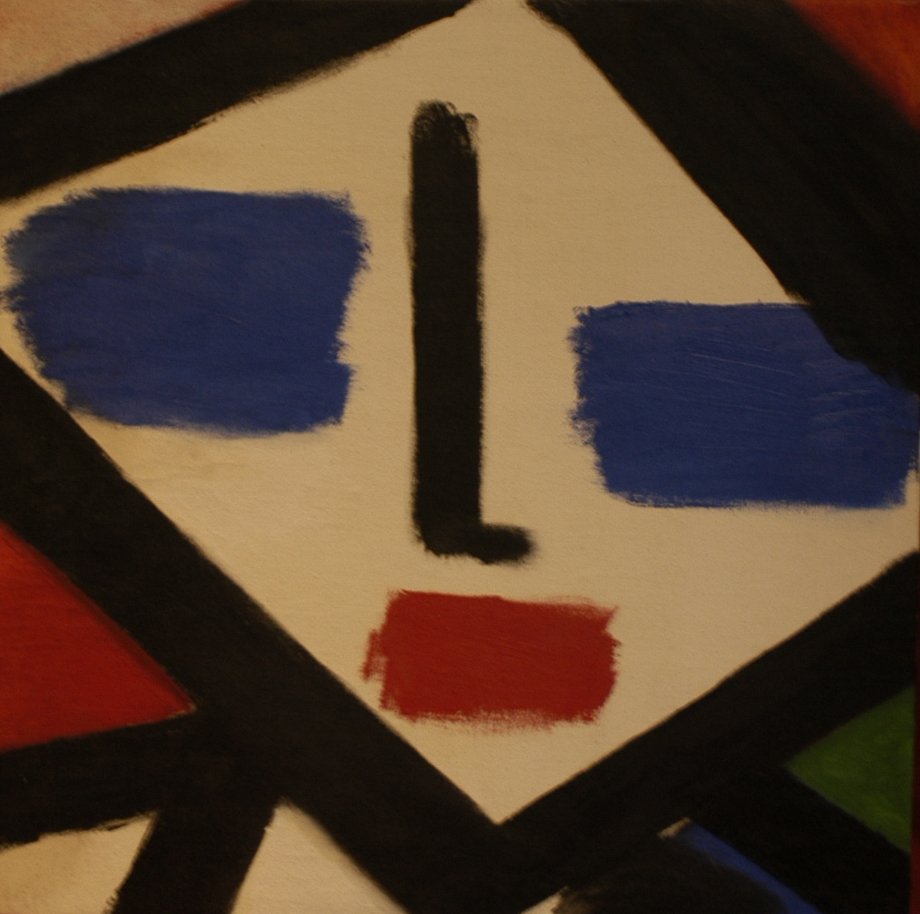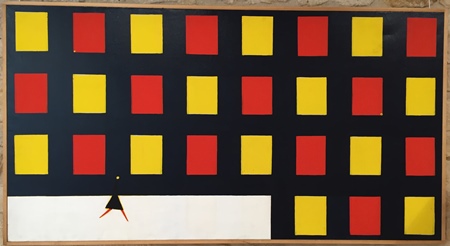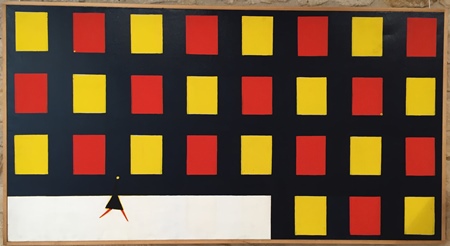NEW YORK STORIES
02/21/2019 - 04/13/2019Evsa MODEL /
Evsa Model, or the journey of man born at the dawn of the 20th century, at the extreme south-east of Siberia, who became an actor and a witness of one of his century?s most memorable artistic adventure
If today his name is famous it is because his last name became the name of an extraordinary artist, the photograph Lisette Model, whom he met in Nice as she was working on her series about La Promenade des Anglais. He married her in Paris in 1937 before their departure for America.
Evsa Model installed himself in Paris in 1921 to study painting, following a walking trip from Russia to Europe going through China. He opened in 1926 the gallery library l'Esthétique and integrated rapidly the milieu of the aesthetic avant-garde of the time. A friend of Michel Seuphor, for whom he drew the cover of the first poetry book Lecture élémentaire, published by the Ecrivains Réunis in 1928.
He was also a friend of Piet Mondrian and of the Hun- garian photographer André Kertész for whom he drew the portrait, at the café du Dôme, a day of May 1927. Later, Michel Seuphor explained that he saw at his house in the Midi de la France : «Two enormous paintings, one of the color grey representing a square drawn in the recess of the paste, the other representing a circle equally drawn in the recess of a thick red paste. It was the exact geometry united to a timeless background but monochrome».
His library remained famous for the picture of its front André Kertész took of it. This was because of the uniqueness of its architecture, being a game of oblique lines in relief acting as a counterpoint to the verticals of static and dynamic rhythms.
Close in idea to Lissitzky?s display realized for the Cabinet des Abstraits in the Landesmuseum of Han- nover, the gallery library proposed novel answers to the question of how to present works of art and do- cuments, how to take in account visitor?s movement, as well as represented an aesthetic success. The ensemble was quite remarkable and unique for Paris at this time. This explains Albert Morancé?s decision to publish about it as soon the winter of 1927, in the prestigious collection of the Architecture Vivante.
Furthermore, Evsa Model?s vitrines proved to also be of importance in his creative drive, often col- laborating with his friend Kertész to fix its overall shape. For example, of the photos of the different vitrines, one showed an abstract composition of three elements: a small sculpture of cubo-dadaist influence, a large white paper placed obliquely and perfectly rolled in a spiral, as well as the drawing of a spiral. Another photograph of Kertész unveiled the books that were exhibited to the visitors: publi- cations on Sonia Delaunay, Willi Baumeister, Nata- lie Gontcharova, Pablo Picasso and l'Architecture Vivante; the rarest and most sophisticated books of the international avant-garde. Later in New York, there were other circles of friends, his own as well as those of Lisette Model, the students, photogra- phers, painters, sculptors, and among those groups: Ossip Zadkine, Hans Hoffmann, Sidney Janis, and still André Kertész.
Sidney Janis exhibited its paintings in Model?s gallery in 1948 and wrote a warm text in the cata- logue he edition for the occasion. The exhibition was visited by Leon Polk Smith but did not prove a great success. The recurring financial difficulties of the Model couple and the financial dependency of Evsa to his wife seemed to have slowly gotten to him, convincing him of the vanity of any efforts to show his own work. It had still not stopped him from painting, from the realization of paintings to his own flat, which, much like Mondrian?s studio, Domela?s one in Berlin, Gorin in Nort-sur-Erdre, Del Marle in Pont-sur-Sambre, became a complete work for its polychromic walls and the staging of its objects.
It seems he always painted. In Paris, his vitrines often exhibited objects and compositions he had created. Yet it looked like his artistic production would always remain in the shadows. It is thanks to Bau- doin Lebon?s flair, and the help of Avi Keitelman, who managed to locate and carefully restore his dif- ferent works in New York, that Evsa Model?s artistic legacy was uncovered and salvaged.
Finally, the greater public is confronted to the full richness of his colors, the energy of his composi- tions, and their originality. Influenced by Mondrian, he did limit himself to primary colors or orthogonal directions. Sometimes his work is organized very minimally with few line and delimited planes, but in other instances it is overrun by lines mimicking the facades of skyscrapers.
The influence of New York and its larger than life space, however, resulted in Evsa Model constant integration of the human figure (alone or as group) stylized and out of scale in his work. In that sense, his work marries abstraction and figuration in ways similar to Joaquim Garcia or even Stuart Davis.
Evsa Model through his work showed links construc- tivists created between architecture, typography, design and paintings. More than that, he, through the creation his library gallery and his painted flats, became a door towards a new artistic dawn.
The rediscovery of his work by Baudoin Lebon per- mits a necessary reappraisal of an artist of great and diverse talents, someone whose life was that of a novel and who should be hailed as so.







